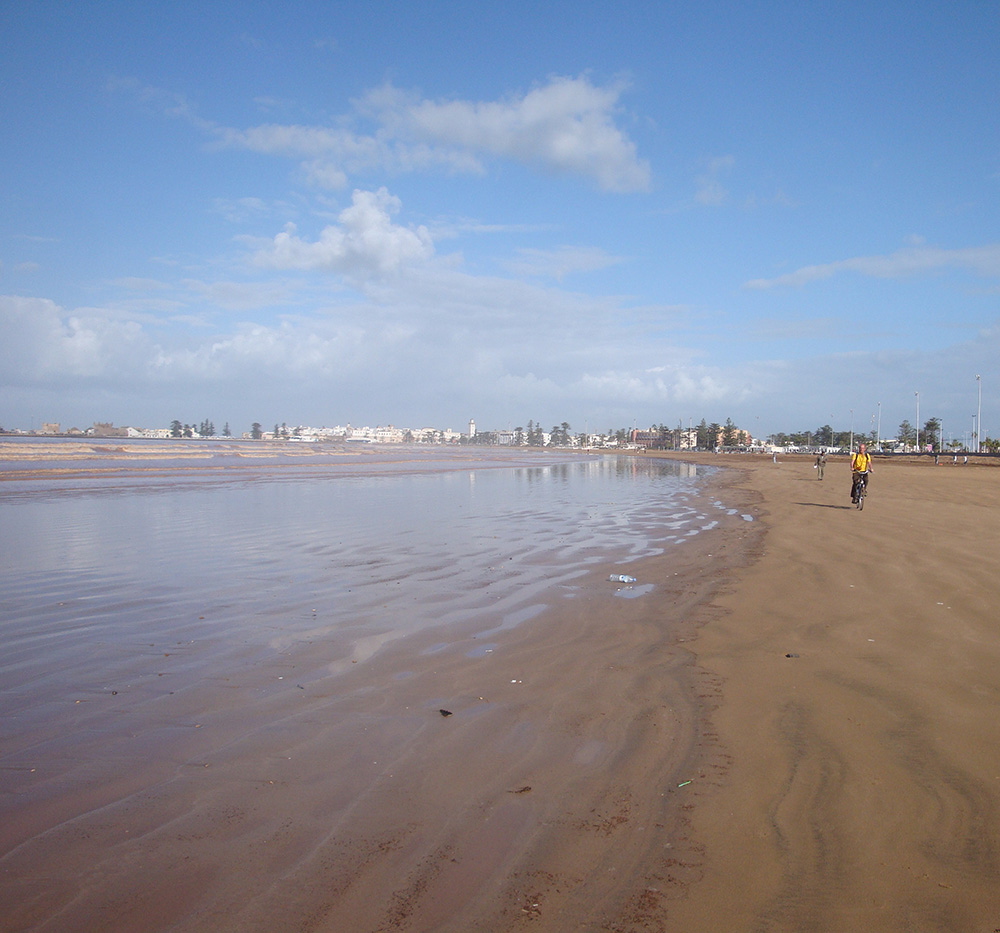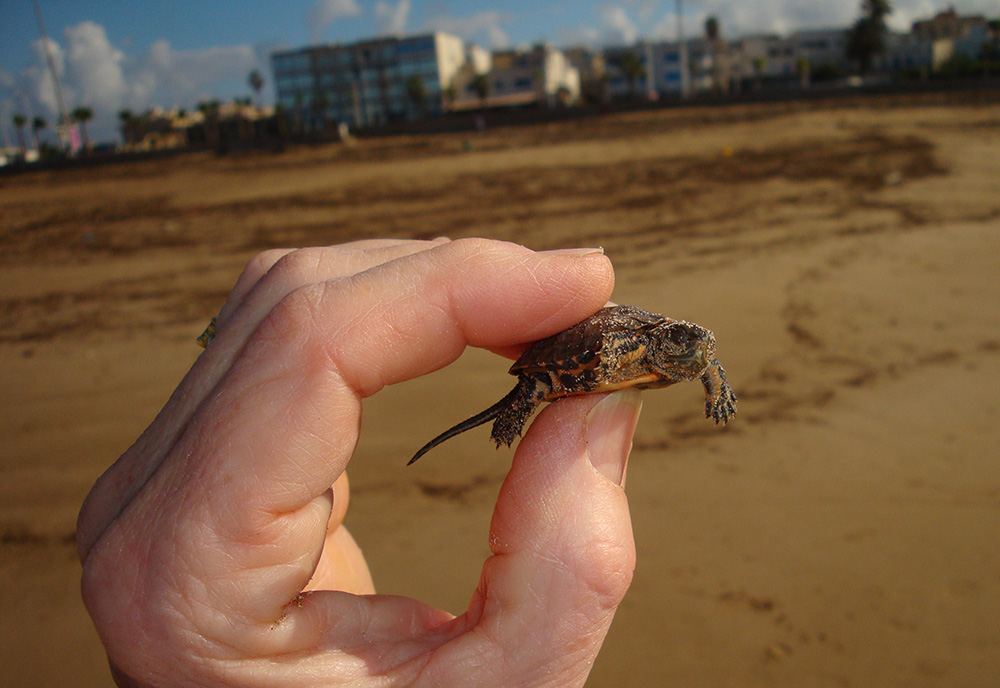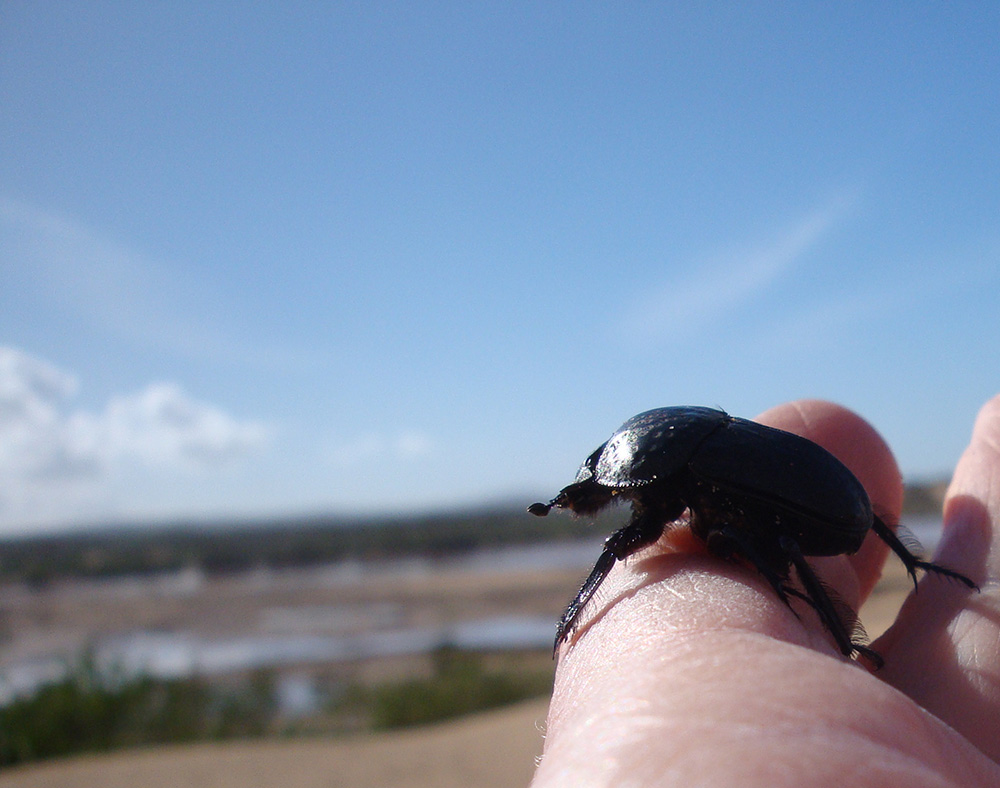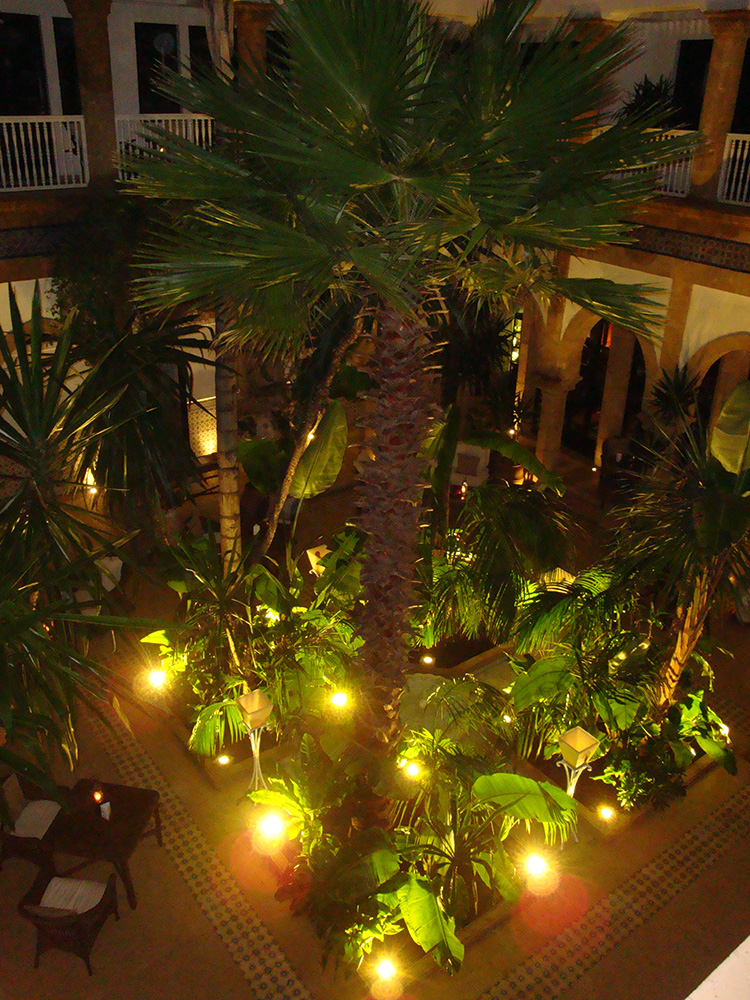We had hoped, during our week in Morocco in December, to get up into the Atlas Mountains but flooding scuppered that idea so instead we headed west. On this journey too we enjoyed the protection of a lucky tasselled Fatima hand. The drive from Marrakech to the coast took two hours and although the seasonal rivers (
oued = wadis) flowed brown, the landscape was sparse. There were occasional irrigated olive groves and a few argan and thuja trees but it looked like a hard place to scratch out a living. It truly felt like we were on the edge of the Sahara. We were introduced to the new industry of argan oil production where, using labour-intensive techniques, the nut is cracked open and the oil extracted. It is promoted as a panacea to reduce cholesterol, avoid diabetes, treat psoriasis and skin aging and countless other uses. It is a nice little earner. So much so that villagers’ incomes have risen and allowed them to buy goats. These are as good for environmental conservation as Hitler was for pacifism. Goats climb trees to browse on leaves so are wrecking the argan forests, which isn’t a desirable outcome in this fragile environment – it could compromise the new industry,

The further west we travelled the greener the landscape grew until we rounded a bend and tumbled out to look down on the massively fortified town of Essaouira. There has been a canon-ball-proof citadel here since before the days of the Armada, when Spain and France squabbled over control of the region with Britain interfering and complicating matters. So the city walls are enormously thick and dotted with tens of canons, many from the early 17
th century, pointing out to sea. Now times are peaceful and the economy seems to be based on fishing and tourism. Essaouira has the reputation for being windy – too windy for some tastes but great for some watersports. And gulls loved playing on the up-draughts.


The souks of Essaouira enticed us in and there was less hassle from the sellers than in Marrakech. Here too there was an over-abundance of tassel salesmen (why so many tassels, and for what purpose?) and also stalls selling natural rouge, lipstick, alum aftershave, toothpicks, Berber shampoo and interesting piles of vegetables claiming medicinal properties. There were herbs to combat hair loss, roots to make you thin, roots to make you fat or to make you smile and lots of varieties of herbal aphrodisiacs labelled Viagra Turbo or Viagra Expresse for men and women.
Near the Riad Essaouira Wind Palace was a washing-machine specialist. The local make was Sofakius which sounded a touch rude, but then to my untutored ear, spoken Arabic does sound rude. Letting the guttural sounds flow over me, partially recognisable sounds jump out: mucker barker-lounger la-la zit Tehran mukmood hafta aktar Omar Sheriff.
The joy of visiting the pristine beach in December is we could enjoy a stroll (or camel ride) almost alone, except for interruptions to examine interesting creatures. I’ve a vague recollection from childhood reading that insects are not found in the sea, so I was puzzled by finding a water scorpion. I’d thought it a pond insect. These Nepid bugs seldom fly and they breathe through a long snorkel protruding from the arse. I assumed that the bug had arrived by accident and needed help but it resolutely headed back for the sea after I’d ‘rescued’ it. There were others, as well as freshwater beetles stomping towards the waves – perhaps they had all arrived courtesy of the recent storms. Maybe they were lost estuary-dwellers.





Next we encountered a species I did know how to help. A baby turtle was stranded on the dry part of the beach. It looked dehydrated and exhausted. Maybe a gull had dropped it or it had become discombobulated in the brick-coloured soup that was the sea. It was invigorated by being put back in the water again.



One day we hired bicycles (for 100 dirham/day) and pedalled south 3km along the deserted beach while opaque red waves pounded the shore. We wondered which and how many unfortunates ended their days in the forbidding prison island of Mogador.
The long sweeping beach ends in sand dunes and an estuary that supports enormous numbers of water birds including thousands of gulls. Cycling through the dunes we heard frogs singing from puddles, watched palm squirrels cavorting in a crumbling riad, and frightened some browsing camels.


I was feeling quite well exercised by the time we were caught up by some passing Australian tourists. On seeing my leg in a brace, one called down from her heavily tasselled camel, “Hey! Sand dunes on a bicycle? That can’t be a good idea – not with a bad knee!”
I wanted to say, “No worries, Sheila.”
The mistake I did make was choosing crab salad for dinner one evening. Visits to North Africa do carry a significant risk of gastroenteritis but it was winter when the risk is lower and I thought I’d get away with breaking the PEEL IT, BOIL IT COOK IT OR FORGET IT rule. I didn’t, and needed to resort to a short course of the reasonably new antibiotic xifaxanta. It worked a treat.
Our trip, towards Sidi Kouaki, took us through a fine range of habitats –
 |
| Thuja 'forest' over-grazed by camels and goats |
from beach to desert dunes to over-grazed thuja and argan forests, but back in time for dinner. Essaouira proved a good base: the freshly cooked sea food and various steaming-hot tagines were great, Casablanca beer passable, the local red wine quaffable and people-watching forever entertaining. December chilliness meant one roof-top restaurant offered thick ponchos for clients to wear. I liked that touch.
The best restaurant by far in Essaouira was the quirky Elizir where both of us were asked to taste the wine as, the waiter told us, they believe in democracy. And later when we were bargaining for gifts, the trader said, “Offer me a democratic price.... to make us both happy!”
We were. I reckon we’ll return.
 |
| The open-to-the-sky central courtyard of the Heure Bleue palais hotel and below is the roof-top pool |
